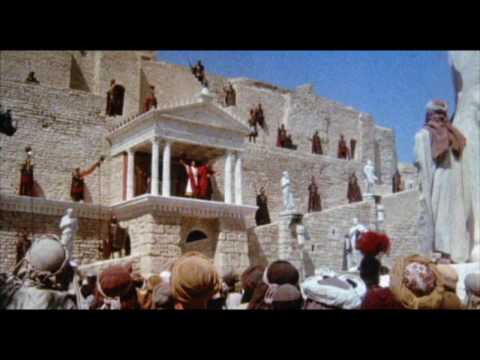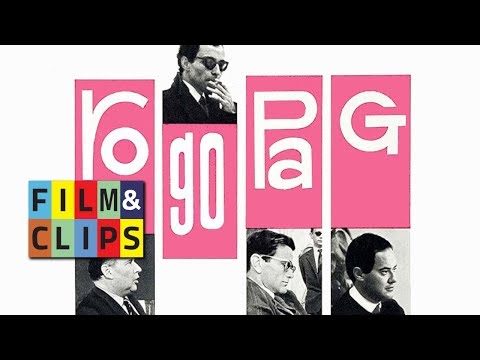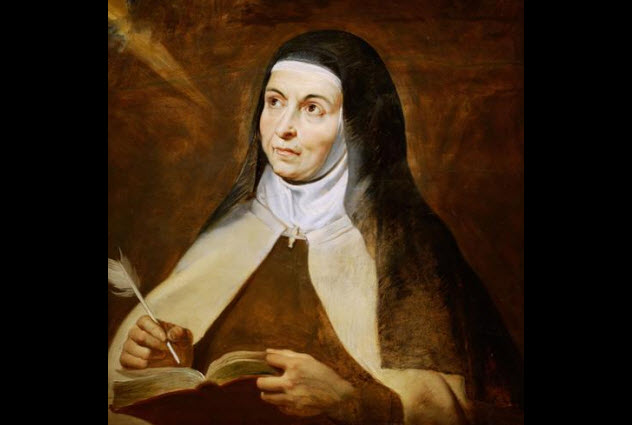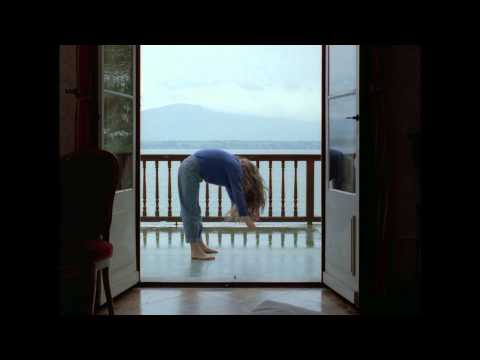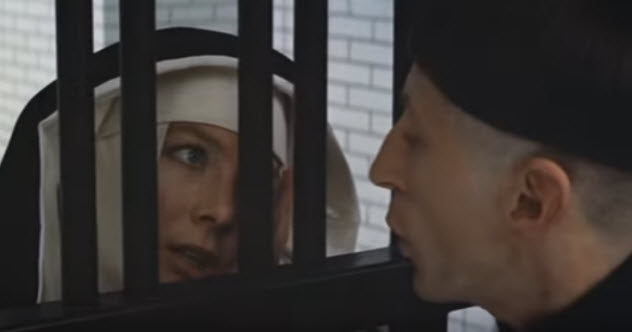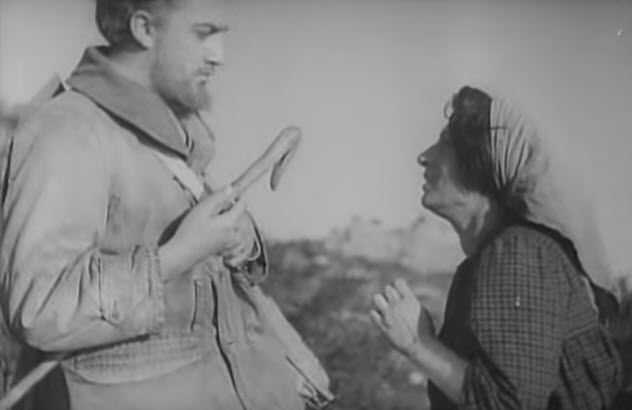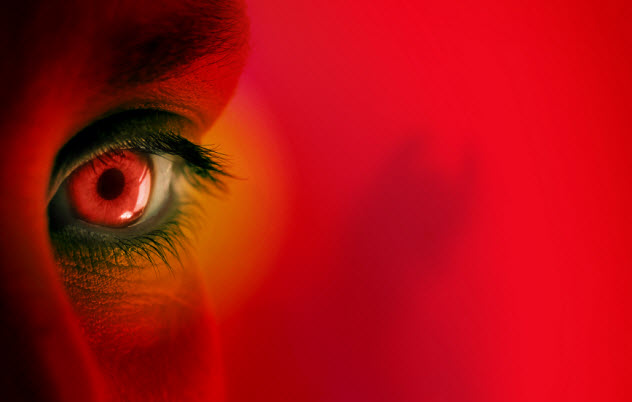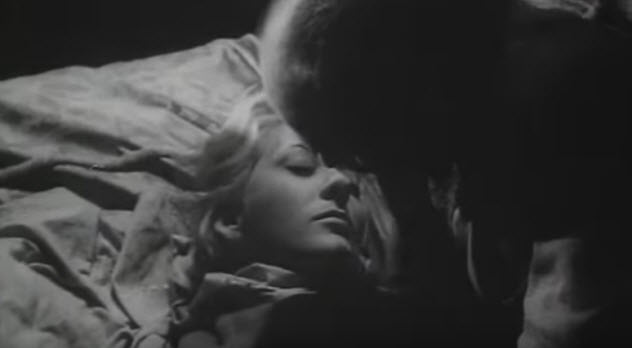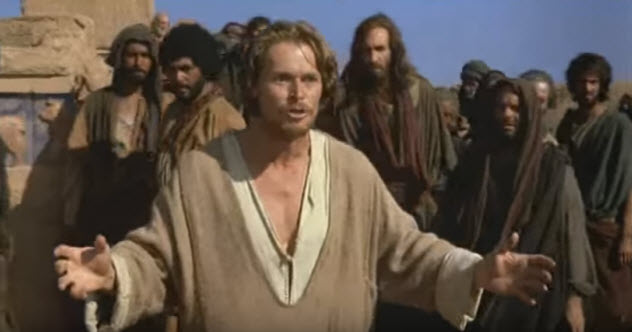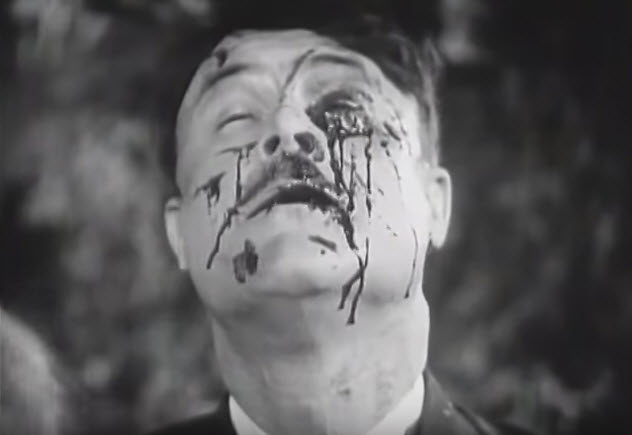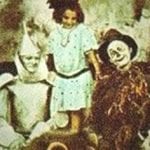10 The Life Of Brian
Monty Python’s story of Brian, a hapless citizen of Roman Judea who is mistakenly identified as the Messiah, caused a massive firestorm upon its release in the UK. Michael Palin and John Cleese even had to debate the film on BBC Two with Malcolm Muggeridge, a Catholic journalist, and Mervyn Stockwood, Anglican Bishop of Southwark. After watching the debate again, Cleese commented that he “was astonished . . . at how stupid [the two members of the church] were and how boring the debate became. I think the sad thing was that there was absolutely no attempt at a proper discussion—no attempt to find any common ground.” The US religious community didn’t like the film, either. It was lambasted by the Catholic Archdiocese of New York as “a crime against religion which holds the person of Christ up to comic ridicule.” These sentiments were echoed by Jewish groups like the Rabbinical Alliance of America, the Union of Orthodox Rabbis, and the Council of Syria and Near Eastern Sephardic Communities. They called the film “a vicious attack on Judaism and the Bible and a cruel mockery of Christian religious feelings as well.” Despite these religious warnings, New York filmgoers appeared to love the film. A young Mike Huckabee described the film this way: A blasphemy against the very name of Jesus Christ. [ . . . ] We can talk about how the Devil’s moved in, but what’s really happened is God’s people have moved out and made room for it. [ . . . ] We’ve sold our character, we’ve sold our convictions, we’ve compromised, we’ve sold out, and as a result, we’ve moved out, the Devil’s moved in, and he’s set up shop. And friend, [he’s] preying on our own craving for pleasure.
9 RoGoPaG
RoGoPaG (“Let’s Wash Our Brains”) was a combination of four short films united by the theme of “recounting the joyous beginning of the end of the world.” European directors Roberto Rossellini, Jean-Luc Godard, Pier Paolo Pasolini, and Ugo Gregoretti directed one film each. The name of the film is a combination of letters from the directors’ last names. Watch this video on YouTube It was Pasolini’s contribution, entitled La ricotta (“Ricotta Cheese”), that led to a religious uproar. His piece featured Orson Welles playing an American director who makes his own film about the crucifixion. Welles uses sacrilegious language—such as “Get those crucified bastards out of here”—to focus on the degradation of religion in modern society. The point of the film was to criticize the hypocrisy in both the church and state, where powerful people can oppress and exploit the weak with ease. The focus of the film within the film was not Jesus Christ but a thief who was crucified next to Jesus. Many of Pasolini’s enemies didn’t see the deeper meaning and accused him of blasphemy: “Rarely has this tribunal seen such an irreverent derision of the Cross, of Christ, and of his Passion and Death.” Pasolini was put on trial and given a four-month suspended sentence under an old Fascist law against “insulting the religion of the state.” Eventually, he received amnesty, but RoGoPaG was banned in Italy.
8 Visions Of Ecstasy
The short film Visions of Ecstasy was the only work ever banned for blasphemy by the British Board of Film Classification (BBFC). The film portrayed the visions of 16th-century Spanish nun St. Teresa of Avila by intercutting scenes of lesbianism between Teresa and another nun with scenes of Teresa caressing a crucified Jesus and fantasizing about kissing Jesus. Though the sexual imagery wasn’t graphic enough to warrant a ban, the BBFC ruled that a ban was necessary because “sexual imagery is focused on the figure of the crucified Christ” for most of the film. The Appeals Committee concurred, calling the film “contemptuous, reviling, insulting, scurrilous.” BBFC director James Ferman claimed that the film would inflame Christian sentiment, and Conservative MP Sir Graham Bright even called for the film’s negatives to be destroyed. In 1996, director Nigel Wingrove challenged the ban at the European Court of Human Rights. Although he lost, the court ruled that blasphemy laws were a violation of the European Convention on Human Rights. In 2008, Section 79 of the Criminal Justice and Immigration Act abolished the common law offenses of blasphemy and blasphemous libel. The British Board of Censors then cleared the film for release without cuts with an 18 rating.
7 Hail Mary
Hail Mary, a 1985 film by Jean-Luc Godard, featured Mary as a 1980s modern teenager with Joseph as her older, sexually frustrated, taxi driver boyfriend. The movie also had erotic imagery of the Virgin Mary after she became miraculously pregnant. In Catholic countries, there was a great outcry over the perceived blasphemous nature of the film. This was especially true in Italy. Pope John Paul II came out strongly against the film, leading global prayers on Vatican radio to “repair the insult to the Holiest Virgin Mary caused by the film.” Godard even offered to stop distribution of the film in Rome, but the Pope’s opposition to the film was mocked by the secular press. Some magazines even ran covers of topless models on crucifixes. However, the more conservative and religious media outlets were incensed. In France, the Confederation of Catholic Family Relations as well as the Alliance Against Racism and for the Respect of the French and Christian Identity campaigned to have the film banned or censored. But the presiding superior court judge in Paris demurred. For the most part, the film was shown throughout France without major incident. However, demonstrators did break into a Versailles theater to slice up the blasphemous reels. At the Cannes Film Festival, someone also threw a shaving cream pie in Godard’s face. In Australia, one of the most vehement opponents of the film was Christian leader Fred Niles, who was furious that the film was not banned in his country. He believed that the country’s censors had lost touch with the community standards and morality of a Christian Australia. Niles said: If this film is not blasphemous, whatever would be rejected? This is a watershed moment, and if there are no prohibitions, then there is nothing to stop them making a film showing Jesus as a criminal with a gang of 12 cutthroat thugs and Moses as a brothel keeper.
6 The Devils
British director Ken Russell’s film The Devils was based on the book The Devils of Loudun by Aldous Huxley and the play The Devils by John Whiting. In turn, these works were based on the story of French Catholic priest Urbain Grandier who was executed for witchcraft in 1634. The film depicted a struggle between Grandier and a central government that wanted to destroy the city of Loudun. But everyone’s focus turned to Sister Jeanne, an erotically charged nun who was eventually possessed by the Devil. When Sister Jeanne became enamored of Grandier, he was considered to be linked to her sorcery. As a result, Grandier became the enemy of the powerful Cardinal Richelieu. In Britain, activist Mary Whitehouse fought to keep the film out of theaters. She led folk guitar sing-alongs outside the cinemas that dared to show the film. Much of the film had to be cut due to the UK’s Obscene Publications Act. The infamous rape of Christ scene, viewed by some as utterly gratuitous and by others as central to the meaning of the film, was hidden away until 2002. In the US, the censored version was still given an X rating by the MPAA, so Warner Brothers cut even more scenes to secure an R rating. The situation was even tenser in Italy. A planned press screening was canceled due to fears of police intervention and Roman Catholic fury. L’Osservatore Romano, the Vatican newspaper, condemned the film’s “perverted marriage of sex, violence, and blasphemy.” Many critics were equally displeased. The Christian Science Monitor called the film “an offensive mockery of Christianity,” and the Los Angeles Times described it as a “despicable and degenerate piece of art.” An unforeseen consequence of the campaign against the film was the birth of the nunsploitation subgenre. Italian filmmakers rode the wave of controversy by making much more blasphemous films, including Suor Omicidi (“Killer Nun”) and Le Scomunicate di San Valentino (“The Sinful Nuns of St. Valentine”). Later defenders of The Devils claimed that Russell’s film merely depicted blasphemy but didn’t commit it like the exploitation films that followed.
5 The Miracle
Released in Italy in 1948 as Il Miracolo, this film was about a slow-minded peasant woman who believed that she was the Virgin Mary. She was plied with alcohol by a vagabond whom she perceived as St. Joseph. Although she was raped, she had no memory of it and decided that she had experienced a miraculous conception. The other villagers mocked her, parading her through the streets with a fake halo. Eventually, the woman escaped to a church and had a religious experience while giving birth. The Vatican wasn’t pleased with the film. L’Osservatore Romano noted that “objections from a religious viewpoint are grave.” But they didn’t ban the film, admitting that it had artistic value. In New York, officials were less accepting when the film was shown in the obscure Paris Theater in Manhattan. City License Commissioner Edward McCaffrey called the film “personally and officially blasphemous” and banned it. The film’s distributor Joseph Burstyn challenged the ban in court. Ultimately, the ban was lifted after the judge decided that McCaffrey needed permission from the State Board of Regents to engage in film censorship. Meanwhile, the Catholic Church’s Legion of Decency decried The Miracle as a “blasphemous mockery of Christian religious truth.” The powerful Cardinal Francis Spellman ordered all 400 parishes in the New York diocese to read a sermon condemning the film as “a despicable affront to every Christian” and “a vicious insult to Italian womanhood.” Picketing soon began outside the Paris Theater. The Catholic War Veterans said that the film “reflected the writings of Moscow,” and the American Legion said that it “ridicules the American principles for which we fought in both wars.” Eventually, New York’s Board of Regents convened and decided that the film was “sacrilegious” for associating the Immaculate Conception and Virgin Birth with “drunkenness, seduction, mockery, and lewdness.” The resulting legal battle eventually reached the US Supreme Court, which ruled that the term “sacrilegious” was too vague to be a valid reason for censorship under the First Amendment.
4 The Council Of Love
The Council Of Love was a 1985 Austrian film known locally as Das Liebeskonzil. It was based on an 1894 anti-Catholic satirical play by Oskar Panizza that was set in the late 1400s. The play depicted God as elderly and feeble, Mary as lascivious and immoral, and Jesus Christ as a cretin due to the consumption of His flesh and blood by His followers. After the Holy Family became displeased by the excesses and orgies of the Borgia papacy, they asked Satan for advice on how to punish the human race. Satan suggested the invention of syphilis. Panizza went to trial over the play. A century later, the Otto-Preminger-Institut (OPI) found itself in similar trouble when it tried to screen a film version which combined footage from a performance of the play in Rome with recreations of Panizza’s trial. The Innsbruck diocese of the Roman Catholic Church requested that a public prosecutor charge the OPI for “disparaging religious doctrines.” After a private screening for a judge, the film was seized by authorities. People who went to the planned screening had to make do with a live reading of the script. The case was later appealed to the European Court of Human Rights. Ultimately, they ruled in favor of the Austrian courts on the grounds that they had “justifiably held [the film] to be an abusive attack on the Roman Catholic religion according to the conception of the Tyrolean public.”
3 Viridiana
The trouble with Luis Bunuel’s 1961 film Viridiana wasn’t so much the blasphemous content as the imagery calling to mind blasphemous thoughts. The film’s plot involved a young nun who was drugged and almost raped by her uncle. After the uncle committed suicide, the young woman divided his property with her dodgy cousin and began to lose her faith. The movie ended with the nun engaging in an implied menage a trois with her cousin and the cousin’s lover. One memorable scene had a group of beggars arrange themselves for a photo in a manner closely resembling the painting of The Last Supper by Leonardo da Vinci. Afterward, the photographer lifted her skirt to flash the motley group. The Vatican newspaper decried the film as blasphemous. The ultra-Catholic Franco regime in Spain had the movie banned even though the government had previously allowed this Spanish film to be entered into the Cannes Film Festival. Incidentally, Viridiana won the Palme d’Or at Cannes. Juan Luis Bunuel, the director’s son, said, “Franco ordered that all the copies of the film be burned. I took the negatives to Barcelona and hid [them] under the cape of a bullfighter to cross the border and I was able to develop the film in Paris.” The film would not be shown in its home country until 1977. When asked about his intentions, Bunuel replied, “I didn’t deliberately set out to be blasphemous, but then Pope John XXIII is a better judge of such things than I am.”
2 The Last Temptation Of Christ
When Nikos Kazantzakis published his novel The Last Temptation of Christ, the work was banned by the Catholic Church. Kazantzakis was also excommunicated from the Greek Orthodox Church. In 1988, Martin Scorsese released a film adaptation that he claimed was “not based on the Gospels but upon this fictional exploration of the eternal spiritual conflict.” In the film, Jesus Christ struggled with His dual nature as both human and divine and fathered children with Mary Magdalene in a vision provided by Satan. Many Christians, particularly Evangelicals, were unhappy with the director and MGM/Universal for distributing the film. Jerry Falwell said: Neither the label “fiction” nor the First Amendment gives Universal the right to libel, slander, and ridicule the most central figure in world history and the one whom countless millions have worshiped and served, namely our Lord Jesus Christ. [ . . . ] It is pure blasphemy and morally reprehensive. Reverend R.L. Hymers led a Fundamentalist protest outside a synagogue that he believed was attended by the head of MGM. Hymers also told Variety magazine that Universal Studios “can probably expect violence.” Prominent television nun Mother Angelica called the film “the most blasphemous ridicule of the Eucharist that’s ever been perpetrated in this world” and “a Holocaust movie that has the power to destroy souls eternally.” In some areas, vigorous protests by Christian groups caused disrupted or canceled screenings. On the day before the premiere, 25,000 protesters gathered in front of Universal’s LA studios, and many theater chains refused to show screenings of the film. Blockbuster Video refused to carry the film in their stores, a policy that remained until the dissolution of the company. In the 1990s, fresh eruptions of protest followed television screenings of the film in Canada and Russia.
1 L’Age d’Or
After Luis Bunuel and Salvador Dali had shocked Paris in 1929 with their surrealist classic Un Chien Andalou, they were commissioned by aristocrats Marie-Laure and Charles de Noailles to make a follow-up feature. In hopes of shocking the middle class, Bunuel decided that the new movie L’Age d’Or should be even longer and more upsetting. The result was bizarre imagery intended to skewer middle-class morality and the rising Fascist and reactionary forces. Much of the content was easily perceived as blasphemous, such as the intense anticlericalism of a scene in which chanting bishops turned into skeletons and the implication that Jesus Christ and the Marquis de Sade were motivated by the same force. Neither the Fascists nor the Catholic Church were amused. One 1930 screening in Paris at Studio 28 was disrupted by Fascists who beat audience members with blackjacks, attacked surrealist paintings in the lobby, and made the theater shut down. The Noailleses were threatened with excommunication by the Pope and with shunning by French high society. The film was also banned by the Paris police. Although a print of the film was smuggled into Britain, the camera negative remained hidden behind seven seals for the next 60 years. Ironically, the surrealists had been hoping for the exact reaction that they received from the church and right-wing forces. Despite being widely banned and rarely viewed, the film became a cause celebre. The surrealists produced a four-page spread detailing the damage done to Studio 28 and questioning why the police allowed such lawless and illiberal behavior by the Fascists to continue. None of David Tormsen’s blasphemous scripts have yet been picked up for production. Email him at [email protected].
